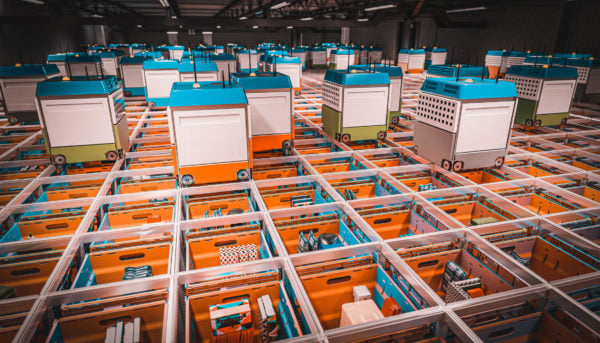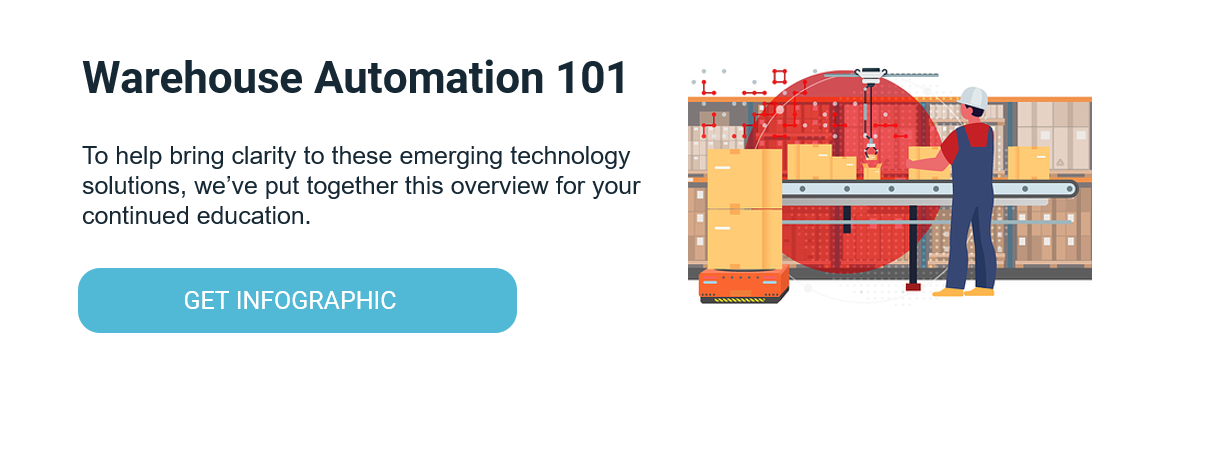How Is Goods-to-Person Automation Different from Person-to-Goods Automation?

Warehouse automation is a complex and convoluted business. Nevertheless, in today’s economy it is an opportunity for savings that many warehouse managers cannot ignore. In your process to find an automation solution for warehouse management, you may wonder what the differences of goods-to-person automation are compared to person-to-goods automation.
In my prior blog, Warehouse Automation: How to Not Fail Before You Begin, I wrote about three key steps to prepare for automation. In the third step, I emphasized the importance of understanding the problem you are trying to solve with warehouse automation. Once you have that nailed down, it’s time to understand what automation solution can help solve your problem. Goods-to-person automation is a popular option that takes the pain out of picking and allows your operations to gain efficiency.
Let’s take a closer look at goods-to-person automation and review its differences to person-to-goods automation.
What Is Goods-to-Person Automation?
The simplest way to explain goods-to-person (GTP) automation is where warehouse pickers stand at static workstations and goods are brought to them by an automated storage and retrieval system (ASRS). The ASRS pulls, moves and delivers the required items — often in a tray or tote — and presents it to the picker who selects the items needed. Immediately, the next tote is presented to the picker for the next pick. The picked totes are then returned to storage or recycled into the pool of available totes by the ASRS.
3 Types of Goods-to-Person Automation Systems
1. Shelf GTP
With shelf-based goods-to-person automation, the entire shelf is presented to the picker by the ASRS. An example of this are carousels that have either vertical or horizontal shelves and vertical lift modules (VLM).
2. Bin GTP
With bin-based goods-to-person automation, an individual tote is presented to the picker and it is often used for smaller and lighter goods where higher density is a factor of the ROI. Examples of bin-based GTP are crane-based mini load and vertical buffer modules (VBM).
3. Robot-based GTP
Robot-based goods-to-person automation is independently moving robots from either the top of lift shelves or the floor racks that deliver the goods to the picking station in an orchestrated sequence of picks.
How Is Goods-to-Person Automation Different from Person-to-Goods Automation?
Person-to-goods (PTG) automation still has the picker walking through the warehouse, but the automation is used to make that walk more efficient and requires the picker to carry less. PTG automation eliminates picking travel time by having the PTG robots (often described as collaborative robots or cobots) perform the aisle to aisle and zone to zone travel independently.
PTG automation generally costs less than goods-to-person automation and can be very flexible to respond to seasonality or other changes in warehouse activity.
The Pros and Cons of Goods-to-Person Automation
One benefit of goods-to-person automation is the fact it can significantly improve picker productivity — more so than PTG automation. Additionally, it provides much higher density storage. On the flip side, goods-to-person automation is typically costly and requires an organization to place a greater initial infrastructure investment. It also builds a single point of failure into the warehouse.
Next Steps
While no automation solution is perfect, the long-term advantages and return on investment are far more, not to mention the higher cost associated with the “do nothing” approach. As your organization prepares for warehouse automation, you may find the problem you are trying to solve requires a hybrid of goods-to-person automation and person-to-goods. Hopefully, this brief comparison has helped with clearing the confusion within the automation landscape.
One thing I know for certain, supply chain disruptions and labor constraints are proving that technology is a key enabler for businesses that want to sustain and grow. This is true across all industries — distribution, healthcare and retail. Organizations need to work closely with their technology service providers. Tecsys is available to help evaluate your technology needs and find the best warehouse automation solution to fulfill those requirements.




